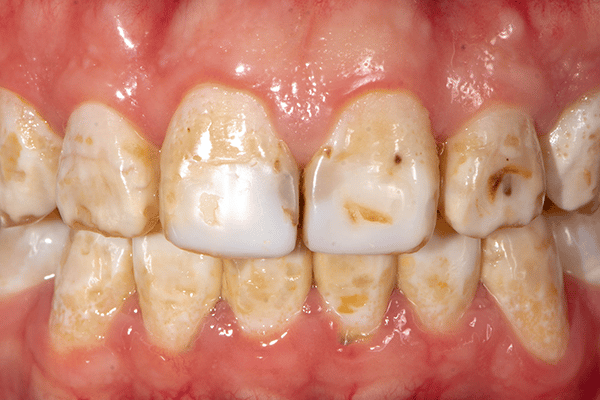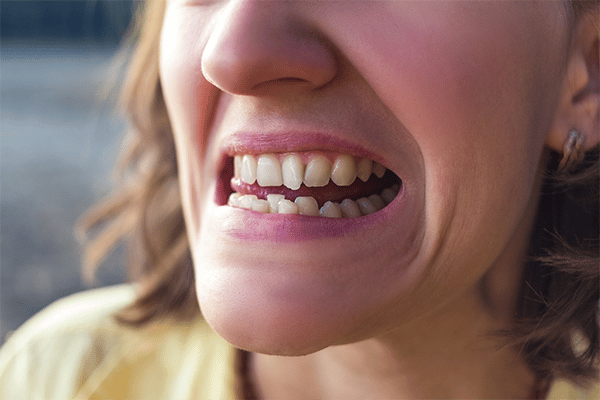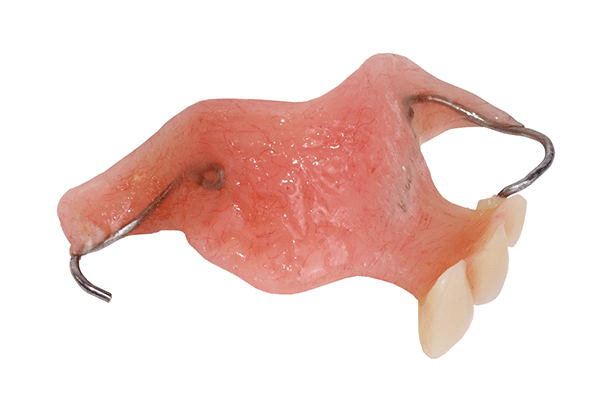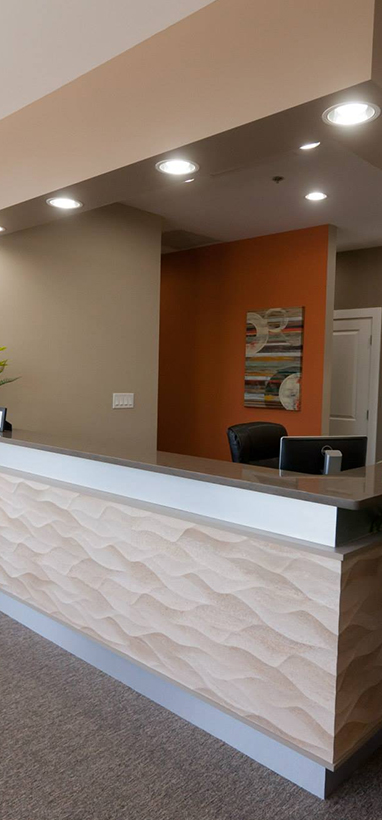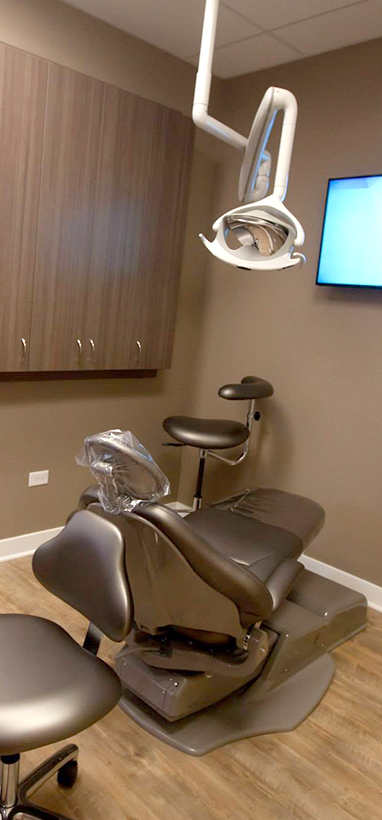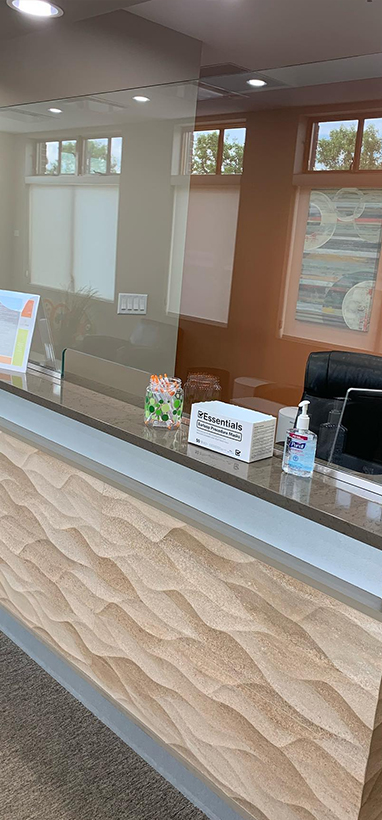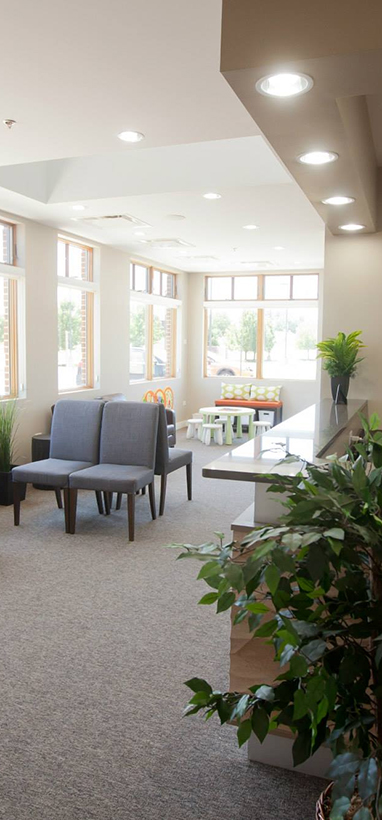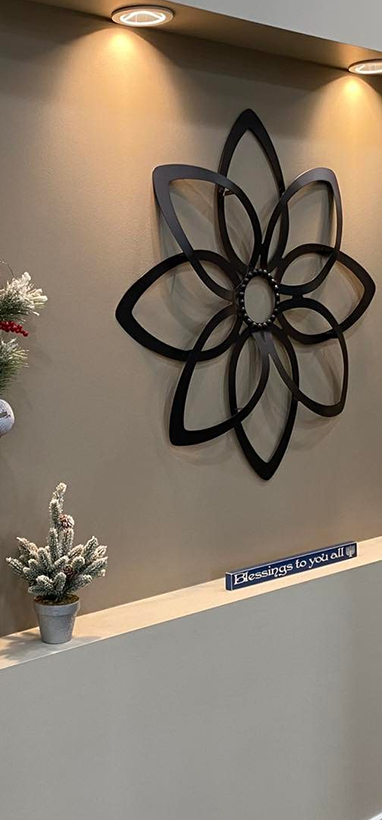1516 Legacy Cir, Naperville, IL 60563
Impacted Wisdom Teeth
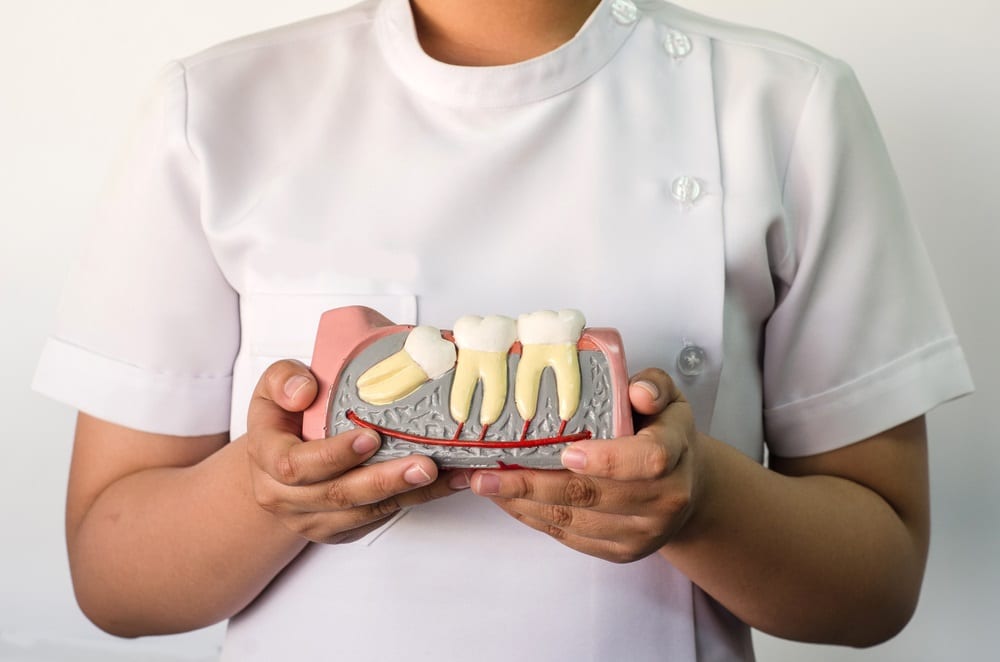
What Does Impacted Wisdom Teeth Mean?
Impacted wisdom teeth refer to third molars (wisdom teeth) that do not have enough space for fully emerging or developing normally in the mouth. They are usually fully formed between the ages of 17 and 25, and they are the last of the 32 teeth to erupt. Depending on the size of the mouth, there may or may not be enough room for them to erupt and be functional.
This condition occurs when the teeth are blocked by other teeth, bone, or soft tissue, preventing them from erupting properly. It is a big deal because impacted wisdom teeth can lead to several complications and oral health issues. Here are a few reasons why impacted wisdom teeth can be problematic:
Pain and Discomfort: Impacted wisdom teeth often cause pain, swelling, and discomfort in the back of the mouth. This can make eating, speaking, and even opening the mouth difficult and uncomfortable.
Infection and Gum Disease: When partially erupted or impacted, the gum tissue around the wisdom teeth can easily trap food particles and bacteria, leading to infection and gum disease. This can result in symptoms like redness, swelling, tenderness, and bad breath.
Tooth Decay: Impacted wisdom teeth can be challenging to clean properly, making them more prone to tooth decay. The teeth’ position and proximity to neighboring teeth can create hard-to-reach areas where bacteria can accumulate and cause cavities.
Cysts and Tumors: Sometimes, impacted wisdom teeth can develop cysts or tumors. These fluid-filled sacs can cause damage to the surrounding teeth, jawbone, and nerves.
Shifting of Teeth: The presence of impacted wisdom teeth can exert pressure on the adjacent teeth, causing them to shift out of alignment. This can lead to crowding, misalignment, or bite problems, necessitating orthodontic treatment.
The best way to avoid further discomfort or damage is to have the teeth extracted. In other cases, the teeth might be somewhat erupted, but they still cannot come all the way through the gum tissue. This is referred to as “partial eruption.” This creates an area where food and bacteria will begin to collect around the tooth. If the area is not kept clean until the tooth can be extracted, infections can occur.
The different types of angles of an impacted tooth include mesioangular and distoangular impaction, horizontal impaction, vertical impaction, and partial eruption. In some cases, however, impacted teeth may not need to be removed. Sometimes it is found that it could cause damage to surrounding anatomy by trying to remove wisdom teeth that are rooted deep into the bone and otherwise stable.
It is best to monitor these areas and check for any changes over time before taking any immediate action.
Impacted Wisdom Teeth Symptoms
Symptoms of impacted wisdom teeth will vary from patient to patient. Some patients may not even notice that they have impacted wisdom teeth until it is brought to their attention by a dentist. Routine x-rays will sometimes show wisdom teeth, but a panoramic x-ray is the best choice for locating them all.
Common symptoms of impacted wisdom teeth include:
- pain,
- cavities,
- inflamed gum tissue,
- bad breath,
- cysts, and more.
Pain is usually due to the pressure of the tooth trying to erupt. Some patients may experience headaches with this as well. Cavities can also be a result of an impacted wisdom tooth.
When an impacted wisdom tooth is only part way through the gum tissue, food and bacteria will collect around the area. This can cause a cavity in the new wisdom tooth coming in as well as the molar tooth next to it.
As mentioned previously, an infection can also occur in the gums if food and bacteria start to collect around a partially erupted wisdom tooth. This infection will cause swelling and inflammation and is referred to as pericoronitis. Bad breath and a foul taste in the mouth often comes along with this type of infection from the bacteria build up.
Cysts are a more serious type of infection that may arise. A sac surrounds the tooth within the jawbone, but if the sac fills with fluid a cyst can form. This can be damaging to the surrounding structures such as the teeth and bone.
Impacted Wisdom Teeth Removal
Wisdom tooth removal, also referred to as a wisdom tooth extraction, is a procedure that is typically done by an oral surgeon.
A general dentist will usually refer his or her patients to a specialist, but if the tooth is all the way through the gum tissue and can be easily removed, they can do it themselves. Wisdom teeth removal usually takes an hour at most, and the patient is sent home the same day.
When the wisdom teeth are impacted, it is usually best for the patient to be under general anesthesia. Depending on the patient’s situation, some doctors will just use local anesthesia and the patient will remain awake.
After the teeth are removed, the area is sewn back together with stitches. In most cases, the stitches are dissolvable and do not need further attention. If the surgeon uses non-dissolvable stitches, the patient will need to go in for a follow up visit to get them removed.
Although it is tempting to feel the area with the tongue, it is important for the patient to be careful with the stitched areas until they are fully healed.
How Long Does it Take for Wisdom Teeth to Heal
Each patient is different, but in most cases healing time is around three to five days before a patient will feel somewhat back to normal again. Depending on how intricate the surgery was, however, it may take closer to a full week to return to regular eating patterns and jaw movements.
Six weeks is the amount of time it normally takes for the bone and gum tissue to be one hundred percent healed. As long as the patient follows proper aftercare instructions given by their surgeon, the stitched up area should heal up within the predicted time frame.
In some unfortunate cases, however, patients may experience a condition referred to as “dry sockets.” Dry sockets, also known as alveolar osteitis, are a very painful side effect that occurs when the blood clot is dislodged or never forms properly and an area of bone is exposed. This is very painful for the patient.
If alveolar osteitis occurs, a patient should contact the surgeon or dentist who performed the procedure immediately. He or she will be able to clean the area out and provide a safe method for healing and pain relief.
What to Eat After Wisdom Teeth Removal?
After wisdom teeth removal, following a soft and easy-to-eat diet is important to allow the surgical site to heal properly. Here are some food options that are generally recommended after wisdom teeth extraction:
- Soups: Warm, pureed soups such as tomato soup, butternut squash soup, or chicken noodle soup are excellent choices. Ensure the soup is not too hot to avoid irritating the surgical area.
- Smoothies: Cold or room temperature smoothies can be soothing and provide nourishment. Choose smoothies made with soft fruits like bananas, berries, or mangoes. You can add yogurt, milk, or protein powder for extra nutrients.
- Yogurt: Soft, non-acidic yogurt is a good source of protein and can be gentle on the surgical site. Avoid yogurts with fruit chunks or seeds that may get stuck in the sockets.
- Mashed Potatoes: Soft, creamy mashed potatoes can be comforting and filling. Avoid adding hard or crunchy toppings like bacon bits or crispy fried onions.
- Scrambled Eggs: Soft scrambled eggs are a good source of protein. Please make sure they are well-cooked and not too hot.
- Cooked and Blended Vegetables: Cooked and blended vegetables like carrots, sweet potatoes, or green beans can be pureed to a smooth consistency.
Remember to avoid hot, spicy, crunchy, or hard foods during the initial days of recovery. It’s also essential to stay hydrated and follow any specific dietary recommendations from your dentist or oral surgeon. Gradually reintroduce solid foods as you heal and feel comfortable doing so.
If you believe you are experiencing any symptoms of impacted wisdom teeth, or are curious if you have wisdom teeth, give our office a call to make an appointment today!



